The Challenge
Many are not aware that the Crown of Thorns Starfish (COTS) has been the main culprit for the 40% loss of coral cover on the Great Barrier Reef over the last couple of decades. Since the 1960s it has suffered multiple episodes where COTS populations explode to plague proportions in localised areas. The sheer size of the Reef, the rate at which COTS can multiply, how difficult they are to kill – and the fact that they are dangerous to handle – make them a difficult enemy to overcome.
Enter COTSbot
COTSbot is an autonomous underwater vehicle with computer vision and machine learning; it is the first robot in the world proven to control marine pests and the first ever built with an injection system. Developed by QUT roboticists, Drs Matthew Dunbabin and Feras Dayoub, in a project with the Australian Centre for Robotic Vision.
The COTSbot can patrol the reef, travelling underwater around three feet above the coral and scanning for COTS on the reef below. Using five independent thrusters to stabilise itself and a camera, its on-board image processing capability allows it to recognise a COTS with greater than 99 per cent accuracy. Then, using its robotic arm, it administers a lethal injection.
The robot was trained to identify COTS by showing it YouTube videos of COTS on the move.
It might sound like science fiction, but the prototype has recently completed ocean trials on the Reef, confirming its ability to operate completely autonomously. The plan is for the COTSbot to work alongside and extend the capabilities of human COTS divers by being able to work at night and in all weathers.
Google Impact Challenge Australia: People’s Choice Winner
The roboticists have teamed up with the Great Barrier Reef Foundation to build on the successful COTSbot platform to create the RangerBot, a low-cost, vision-enabled autonomous underwater vehicle.
That project has just won a $750,000 people’s choice vote in the Google Impact Challenge Australia, a competition which helps not-for-profit organisations develop technologies that can help to tackle the world’s biggest social challenges.
Foundation Managing Director Anna Marsden said “We want to empower communities on the front line of coral reef management with an affordable, versatile tool for monitoring and managing a wide range of marine issues. More than one billion people depend on reefs for their food and livelihood but often those people live in poorer communities and don’t have access to environmental funding or programs.”
More about the COTS problem
The Reef is already under threat from the cumulative impacts of Climate Change, which has led to significant coral beaching, and reduced water quality which delivers silt and fertilisers, reducing the Reef’s ability to recover.
But the Australian Institute of Marine Science (AIMS) estimates that COTS have had the biggest impact and are responsible for destroying over 40% of the Reef over the last couple of decades. Each night a COTS eats its own ‘footprint’ or body area of healthy coral, which adds up to 117 square feet of reef per COTS per year. With a single COTS this is not necessarily an issue as corals can re-colonise the clean white skeleton left behind, before its colonised by algae. However, with an estimated 4 to 12 million COTS out there, the impact is colossal. Just how do you get those numbers down?
Challenges with Population Control
There are a number of challenges with population control: COTS have particularly high fecundity – releasing up to 50 million eggs per breeding cycle; they have few natural predators and they are notoriously hard to kill.
Like many invertebrates (including corals) they release sperm and eggs simultaneously to increase the chance of successful proliferation. Now that there are so many more COTS, and COTS in aggregations, they have a massively improved success rate compared to fewer and relatively isolated individuals. The more of them there are, the much more successfully they multiply.
Another factor includes agricultural run-off, rich in fertiliser that produces plankton blooms which further increases the chances of survival of the larvae. Add to this, warmer waters which improve larval survival rates as well.
Of their predators, most will only eat them when there’s nothing else available. The Triton sea snail is a main known predator but its populations have been reduced by pollution, collection and habitat destruction.
They are also notoriously hard to kill. They can regenerate from even small parts, actually creating multiple COTS from a single individual. Stab them, and they release sperm and eggs.
In some Pacific islands, the preferred method is simply to collect them manually, bag them and then bury them on land. Though there are dangers to human divers utilising this method as the COTS’ spikes contain toxin, and while they have no injectors as such, if the spikes puncture soft wet skin, they break off causing pain and swelling lasting for weeks, and often need to be surgically removed.
Researchers at James Cook University in Townsville, Queensland, have discovered that an injected dose of 20ml of vinegar has a 100 per cent kill rate, delivering a low-cost, simple solution for ad hoc use. A faster result is achieved with ox bile salts, which only require a single shot.
On the Reef, the Association of Marine Park Tourism Operators (AMPTO) deploys two vessels, manned by teams of divers armed with injector guns and ox-bile salts, to patrol the areas of the Reef most frequently visited by their members’ tourism boats. The team is able to take out up to 400,000 COTS per annum, but their intention is only to hold the status quo.
A small fleet of COTSbots can cover much larger areas, work 8 hours per day, and even at night when the COTS are out and feeding. Divers will still be required to find and destroy those harder to reach COTS hiding under over-hanging corals, but working together machine and man might turn the tide and start winning the war against COTS.
Media Enquires: Kate Haggman, QUT Media, 07 3138 0358, kate.haggman@qut.edu.au
All images of COTSbot supplied and copyrighted by QUT.
If you liked this post, you might also like Tackling the Reef’s Prickliest Problem.

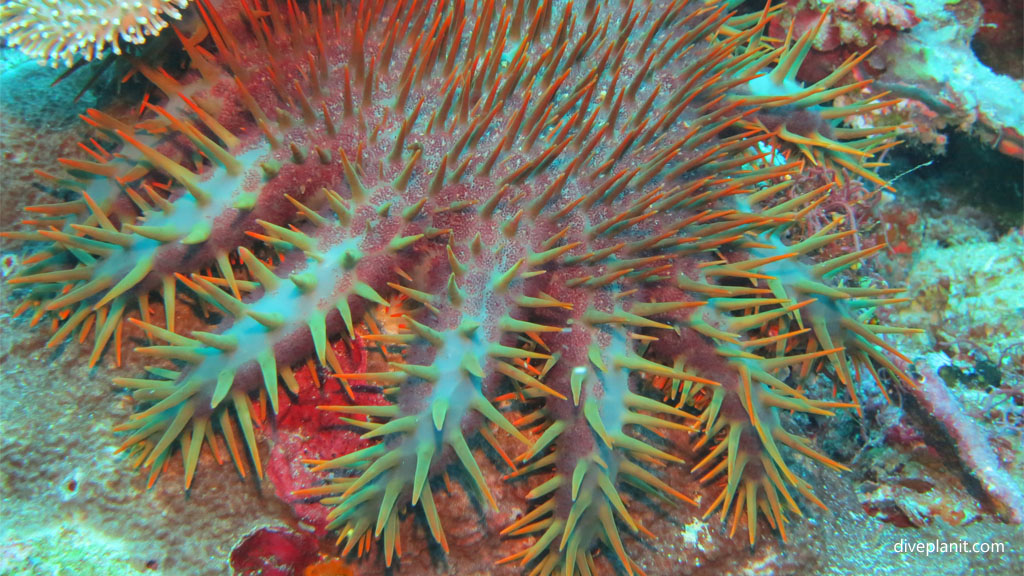
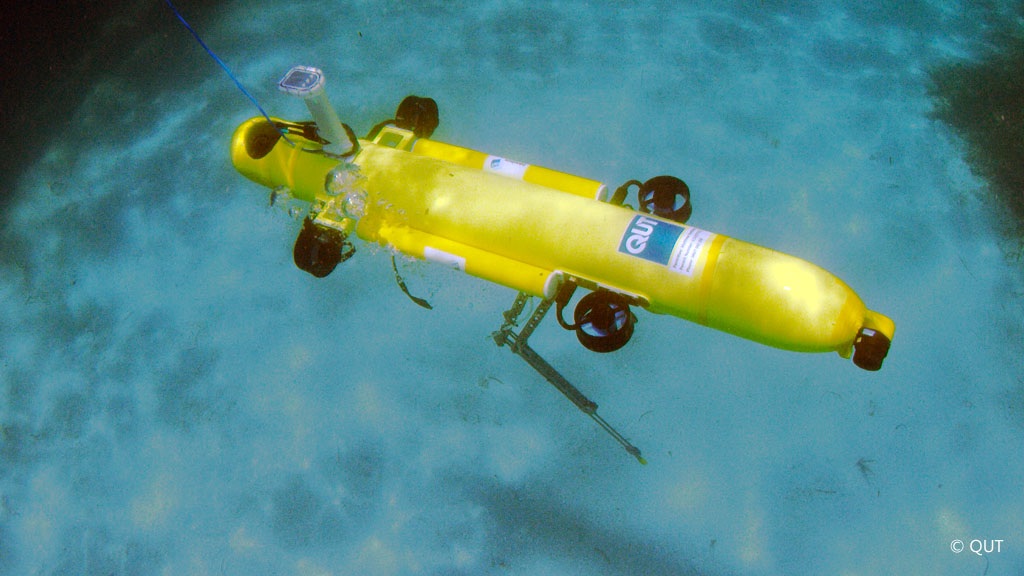
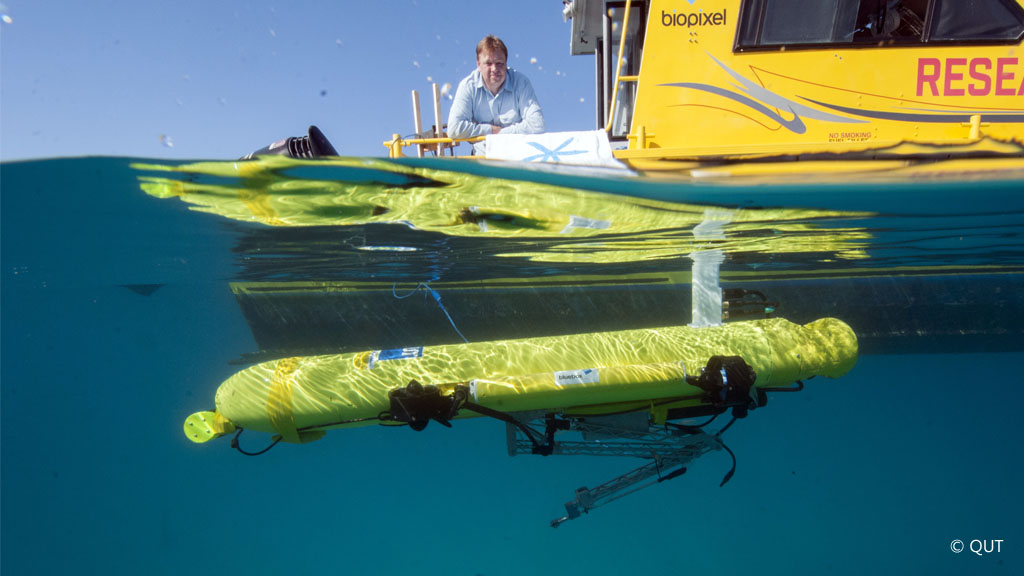

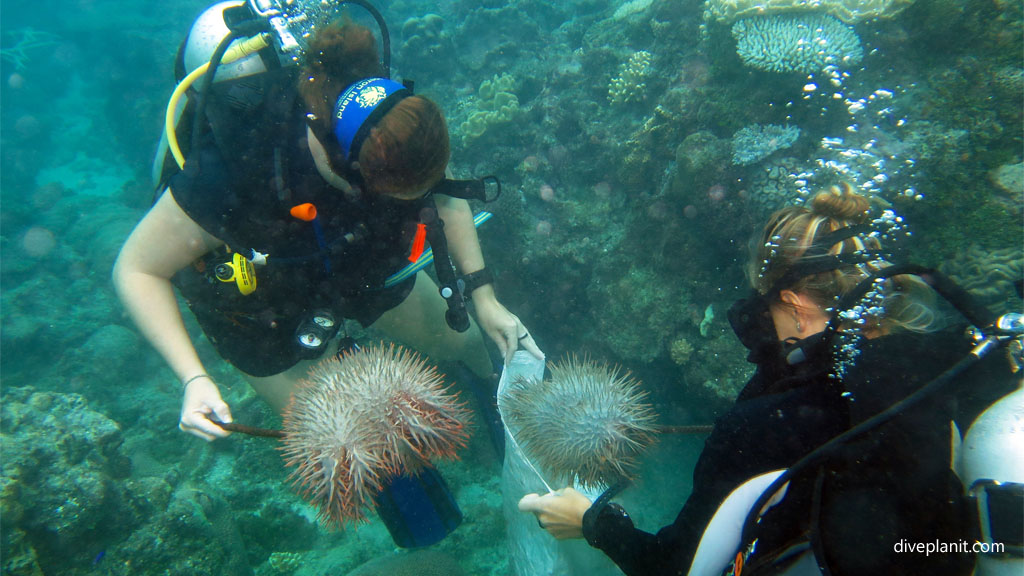
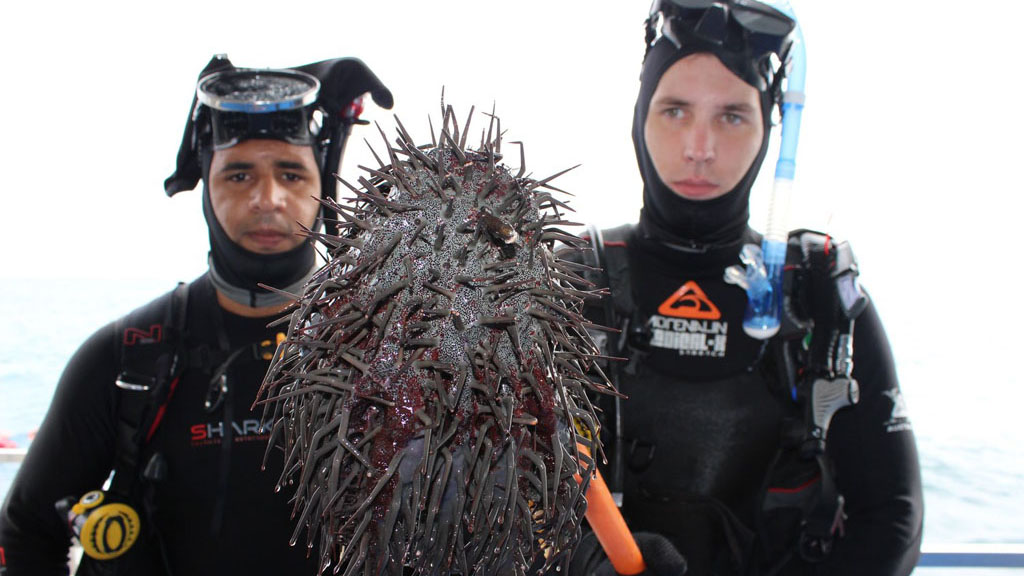
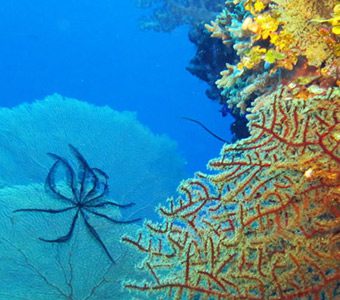


Wow incredible! Saving the planet one day at a time 🙂